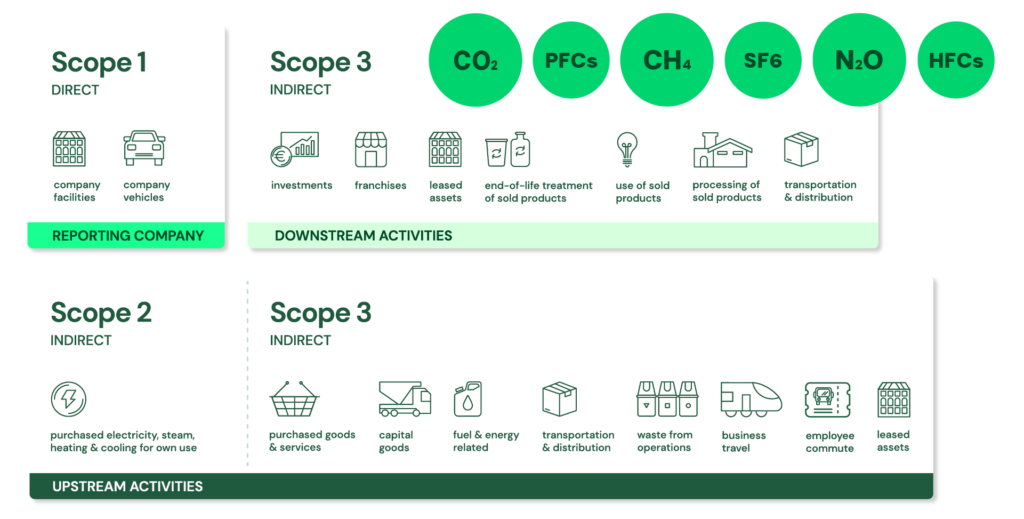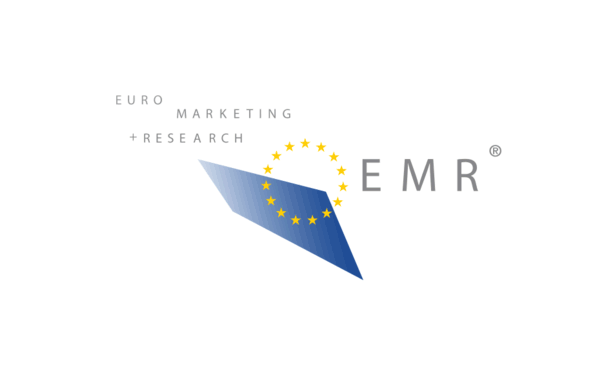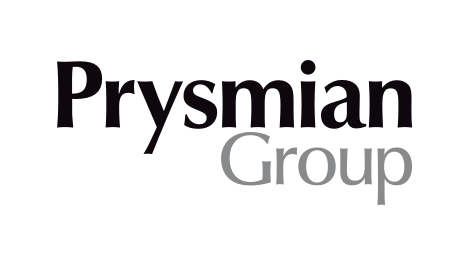Prysmian – Dow Jones Sustainability Index: Prysmian’s sustainability leadership confirmed
Prysmian has been confirmed in the Dow Jones Sustainability World Index (DJSI) and in the Dow Jones Sustainability Europe Index (DJSI Europe), strengthening its leadership position in terms of sustainability performance – the only cable solution provider in the index.
Prysmian has been included in the Dow Jones Sustainability Index (World & Europe), with a leadership position in ELQ Electrical Components & Equipment sector. Prysmian is the only cabling solutions provider included in the index. In 2024, the assessment looked at Prysmian’s commitments & action in regards Emissions, Resource Efficiency and Circularity, Waste, and Water. This year has seen Prysmian take significant steps to affirm its leadership position in terms of sustainability thanks to:
- Prysmian confirms its 2024 guidance on scope 1&2 GHG emission reduction of 36% and Scope 3 reduction of 13% vs 2019, while including Encore Wire within the perimeter.
- The launch of E-Path, Prysmian’s new label for cables that have been made to fully incorporate market-leading standards in measurable sustainability criteria. The label is be applied to Prysmian products meeting this standard across the world, and being given external third-party validation, including through inspections at Prysmian’s plants.
- Prysmian has become a member of the “Copper Mark” initiative – the leading assurance framework to help increase the amount of responsibly produced sourced, and recycled metal available to society.
- Prysmian’s share of revenues from sustainable products reached 45% at Q3 2024, already surpassing the 2025 target of 40%.
- Prysmian has also made progress across the year in terms of reducing GHG emissions, introducing recycled copper on PE jackets and copper and gender diversity. This year Prysmian has also continued its employee share plan programme, with circa 40% of all employees holding shares in the company. Prysmian employees collectively hold circa 1.5% of the company.
Maria Cristina Bifulco, Chief Investor Relations, Sustainability and Communication Officer, Prysmian, said: “We are proud of the leadership role we play in the market, and as a sustainability champion. Prysmian works attentively towards how it impacts the planet and people, and this important and prestigious recognition underlines the continuous progress we are making. 2024 has been marked by delivery & facts – we have made significant progress with the revenues coming from sustainable products at 45% at the nine-month results, while also taking on new initiatives to boost transparency such as joining the Copper Mark and launching E- Path. Next year we will not stop, we will go even further, with an update to the market coming at our second ever capital markets day in March.”
Prysmian has also recorded a significant improvement in its social performance within the Dow Jones Sustainability Index (DJSI). This achievement is the result of a continuous and concrete commitment to enhancing the company’s social sustainability, particularly through two key areas: employee training and the adoption of inclusive policies.
Prysmian has invested in numerous courses and training programmes focused on various ESG (environmental, social, and governance) topics to support the growth and development of its people, preparing them to face the challenges of an increasingly sustainability-conscious market. At the same time, projects and policies have been implemented to ensure a healthy work-life balance, creating an inclusive, respectful, and diversity-friendly environment. These efforts have been fundamental in strengthening the company culture and contributing to greater social equity, in line with Prysmian’s sustainability and social responsibility goals.
SourcePrysmian Group
EMR Analysis
More information on Prysmian: See the full profile on EMR Executive Services
More information on Massimo Battaini (Group Chief Executive Officer and General Manager, Prysmian Group): See the full profile on EMR Executive Services
More information on E Path by Prysmian: https://www.prysmian.com/en/sustainability/e-path + E Path represents Prysmian’s label for low impact cable solutions to bring clean energy and enhance communication in our homes, infrastructures and cities around the world.
To be E Path-labelled, each cable family has to pass a rating process based on the following criteria: Carbon Footprint (calculated according to “cradle-to-gate” approach and combined with other parameters to achieve full “cradle-to-grave” carbon footprint); Substances of Very High Concern (absence of substances that are carcinogenic, mutagenic, toxic for reproduction, or hazardous for the environment); Recyclability/Circularity (materials used in cables are potentially recyclable or products themselves are potentially fully recyclable); Recycling Input Rate (presence of recycled material in a cable, both purchased from external suppliers and reused by Prysmian itself); Environmental Benefits (low-carbon enabling products, CPR compliant cables and cables used for green energy sources); Cable Transmission Efficiency (the more efficient the cable, the more sustainable its performance. For Optical cables this means an increase in fibre density).
More information on Maria Cristina Bifulco (Chief Investor Relations, Sustainability and Communication Officer, Prysmian Group): See the full profile on EMR Executive Services
More information on Encore Wire by Prysmian: https://www.encorewire.com/ + A company based on old-fashioned values.
Encore Wire began its legacy in 1989, as a 68,000 square foot industrial warehouse building in McKinney, Texas. With support and dedication from our employees, our customers and our community, we have grown to over 3.5 million square feet under roof and stretch across 460 acres. Today, Encore Wire is a leading manufacturer of copper and aluminum residential, commercial and industrial building wire.
As an industry leading manufacturer in wire and cable, with innovation in product development and unparalleled service, we give our clients the competitive edge for each and every build.
Encore Wire is a leading manufacturer of a broad range of copper and aluminum electrical wire and cables, supplying power generation and distribution solutions. Encore Wire’s diversified product portfolio and low-cost of production position it exceptionally well to play a key role in the transition to a more sustainable and reliable energy infrastructure. In fiscal year 2023, Encore Wire delivered revenue of approximately $2.6 billion and EBITDA of $517 million.
More information on Daniel L. Jones (Chief Executive Officer, Encore Wire, Prysmian): See the full profile on EMR Executive Services
More information on S&P Global + S&P Dow Jones Indices: https://www.spglobal.com/en/ + S&P Dow Jones Indices is the largest global resource for essential index-based concepts, data and research, and home to iconic financial market indicators, such as the S&P 500® and the Dow Jones Industrial Average®. More assets are invested in products based on our indices than products based on indices from any other provider in the world. Since Charles Dow invented the first index in 1884, S&P DJI has been innovating and developing indices across the spectrum of asset classes helping to define the way investors measure and trade the markets.
S&P Dow Jones Indices is a division of S&P Global (NYSE: SPGI), which provides essential intelligence for individuals, companies, and governments to make decisions with confidence.
More information on S&P Dow Jones Sustainability World Index (DJSI): https://www.spglobal.com/spdji/en/indices/esg/dow-jones-sustainability-world-index/#overview + The Dow Jones Sustainability™ World Index comprises global sustainability leaders as identified by S&P Global through the Corporate Sustainability Assessment (CSA). It represents the top 10% of the largest 2,500 companies in the S&P Global BMI based on long-term economic, environmental and social criteria.
More information on Douglas L. Peterson (President and Chief Executive Officer, S&P Global): https://www.spglobal.com/en/who-we-are/our-people/operating-committee/douglas-peterson + https://www.linkedin.com/in/douglas-peterson-1254245/
More information on The Copper Mark: https://coppermark.org/ + The Copper Mark is the leading assurance framework to promote responsible practices across the copper, molybdenum, nickel and zinc value chains. We work with companies and organisations throughout these metals’ value chains to enable them to better understand and meet the increasing demands for independently verified responsible practices, and to contribute positively to sustainable development.
The Copper Mark’s Standards (Criteria for Responsible Production and Joint Due Diligence Standard) combined with the site assessments provide up-to-date and credible information on responsible practices, strengthening transparency for investors, civil society, and companies using copper in their products. The Copper Mark was initiated by the International Copper Association (ICA), and is built on a genuine commitment from the copper industry to ensure responsible production practices. Since December 2019, the Copper Mark has been an independent entity and has committed to including the perspectives of its impacted stakeholders in the governance structure. It is governed by its Board of Directors and a multi-stakeholder Advisory Council.
More information on Michèle Brülhart (Executive Director, The Copper Mark): https://coppermark.org/about/team/
EMR Additional Notes:
- Circular Economy:
- A circular economy is a systemic approach to economic development designed to benefit businesses, society, and the environment. In contrast to the ‘take-make-waste’ linear model, a circular economy is regenerative by design and aims to gradually decouple growth from the consumption of finite resources.
- In such an economy, all forms of waste, such as clothes, scrap metal and obsolete electronics, are returned to the economy or used more efficiently.
- The aim of a circular economy is hence to create a closed-loop system where waste and pollution are minimized and resources are conserved, reducing the environmental impact of production and consumption.
- Sustainability Vs. Circular Economy:
- Circularity focuses on resource cycles, while sustainability is more broadly related to people, the planet and the economy. Circularity and sustainability stand in a long tradition of related visions, models and theories.
- A sustainable circular economy involves designing and promoting products that last and that can be reused, repaired and remanufactured. This retains the functional value of products, rather than just recovering the energy or materials they contain and continuously making products anew.
- Global Warming:
- Global warming is the long-term heating of Earth’s climate system observed since the pre-industrial period (between 1850 and 1900) due to human activities, primarily fossil fuel burning, which increases heat-trapping greenhouse gas levels in Earth’s atmosphere.
- Global Warming Potential (GWP):
- The heat absorbed by any greenhouse gas in the atmosphere, as a multiple of the heat that would be absorbed by the same mass of carbon dioxide (CO2). GWP is 1 for CO2. For other gases it depends on the gas and the time frame.
- Carbon dioxide equivalent (CO2e or CO2eq or CO2-e) is calculated from GWP. For any gas, it is the mass of CO2 which would warm the earth as much as the mass of that gas. Thus it provides a common scale for measuring the climate effects of different gases. It is calculated as GWP times mass of the other gas. For example, if a gas has GWP of 100, two tonnes of the gas have CO2e of 200 tonnes.
- GWP was developed to allow comparisons of the global warming impacts of different gases.
- Greenhouse Gas (GHG):
- A greenhouse gas is any gaseous compound in the atmosphere that is capable of absorbing infrared radiation, thereby trapping and holding heat in the atmosphere. By increasing the heat in the atmosphere, greenhouse gases are responsible for the greenhouse effect, which ultimately leads to global warming.
- The main gases responsible for the greenhouse effect include carbon dioxide, methane, nitrous oxide, and water vapor (which all occur naturally), and fluorinated gases (which are synthetic).

- GHG Protocol Corporate Standard Scope 1, 2 and 3: https://ghgprotocol.org/ + The GHG Protocol Corporate Accounting and Reporting Standard provides requirements and guidance for companies and other organizations preparing a corporate-level GHG emissions inventory. Scope 1 and 2 are mandatory to report, whereas scope 3 is voluntary and the hardest to monitor.
- Scope 1: Direct emissions:
- Direct emissions from company-owned and controlled resources. In other words, emissions are released into the atmosphere as a direct result of a set of activities, at a firm level. It is divided into four categories:
- Stationary combustion (e.g fuels, heating sources). All fuels that produce GHG emissions must be included in scope 1.
- Mobile combustion is all vehicles owned or controlled by a firm, burning fuel (e.g. cars, vans, trucks). The increasing use of “electric” vehicles (EVs), means that some of the organisation fleets could fall into Scope 2 emissions.
- Fugitive emissions are leaks from greenhouse gases (e.g. refrigeration, air conditioning units). It is important to note that refrigerant gases are a thousand times more dangerous than CO2 emissions. Companies are encouraged to report these emissions.
- Process emissions are released during industrial processes, and on-site manufacturing (e.g. production of CO2 during cement manufacturing, factory fumes, chemicals).
- Direct emissions from company-owned and controlled resources. In other words, emissions are released into the atmosphere as a direct result of a set of activities, at a firm level. It is divided into four categories:
- Scope 2: Indirect emissions – owned:
- Indirect emissions from the generation of purchased energy, from a utility provider. In other words, all GHG emissions released in the atmosphere, from the consumption of purchased electricity, steam, heat and cooling. For most organisations, electricity will be the unique source of scope 2 emissions. Simply stated, the energy consumed falls into two scopes: Scope 2 covers the electricity consumed by the end-user. Scope 3 covers the energy used by the utilities during transmission and distribution (T&D losses).
- Scope 3: Indirect emissions – not owned:
- Indirect emissions – not included in scope 2 – that occur in the value chain of the reporting company, including both upstream and downstream emissions. In other words, emissions are linked to the company’s operations. According to GHG protocol, scope 3 emissions are separated into 15 categories.
- Scope 1: Direct emissions:

- ESG (Environmental, Social and Governance):
- Refers to the three key factors when measuring the sustainability and ethical impact of an investment in a business or company. Most socially responsible investors check companies out using ESG criteria to screen investments.
- ESG metrics are not commonly part of mandatory financial reporting, though companies are increasingly making disclosures in their annual report or in a standalone sustainability report.
- There is not a standardized approach to the calculation or presentation of different ESG metrics.
- Environmental: Conservation of the natural world
- Climate change and carbon emissions
- Air and water pollution
- Biodiversity
- Deforestation
- Energy efficiency
- Waste management
- Water scarcity
- …
- Social: Consideration of people & relationships
- Customer satisfaction
- Data protection and privacy
- Gender and diversity
- Employee engagement
- Community relations
- Human rights
- Labor standards
- …
- Governance: Standards for running a company
- Board composition
- Audit committee structure
- Bribery and corruption
- Executive compensation
- Lobbying
- Political contributions
- Whistleblower schemes
- …
- Environmental: Conservation of the natural world
- Criteria are of increasing interest to companies, their investors and other stakeholders. With growing concern about he ethical status of quoted companies, these standards are the central factors that measure the ethical impact and sustainability of investment in a company.
- Consequently, ESG analysis considers how companies serve society and how this impacts their current and future performance.
- CSR (Corporate Social Responsibility):
- Framework or business model that helps a company be socially accountable to itself, its stakeholders, and the public.
- The purpose of CSR is to give back to the community, take part in philanthropic causes, and provide positive social value. Businesses are increasingly turning to CSR to make a difference and build a positive brand around their company.
- CSR tends to target opinion formers – politicians, pressure groups, media. Sustainability targets here the whole value chain – from suppliers to operations to partners to end-consumers.
- CSR vs. ESG:
- CSR is a company’s framework of sustainability plans and responsible cultural influence, whereas ESG is the assessable outcome concerning a company’s overall sustainability performance.
- The major difference between them is that CSR is a business model used by individual companies, while ESG is a criteria that investors use to assess a company and determine if they are worth investing in.


